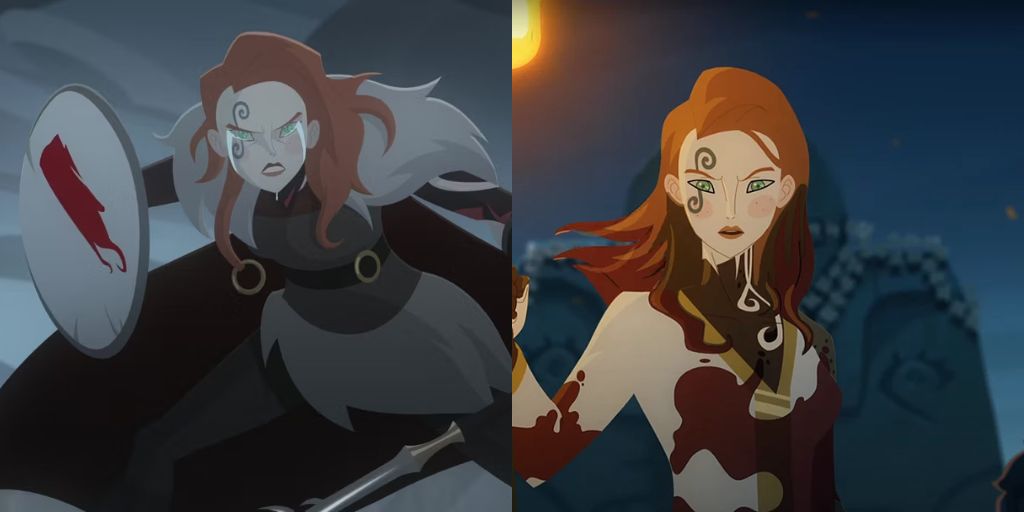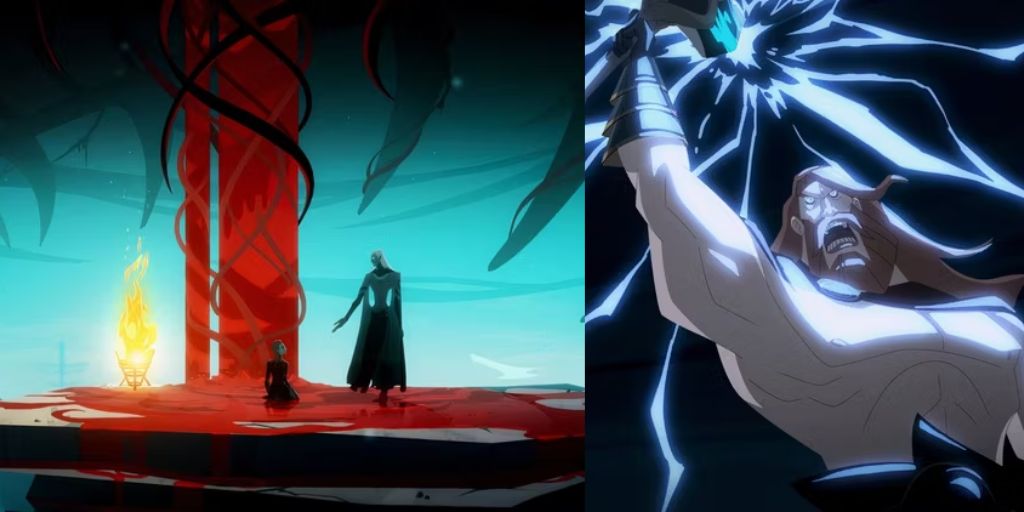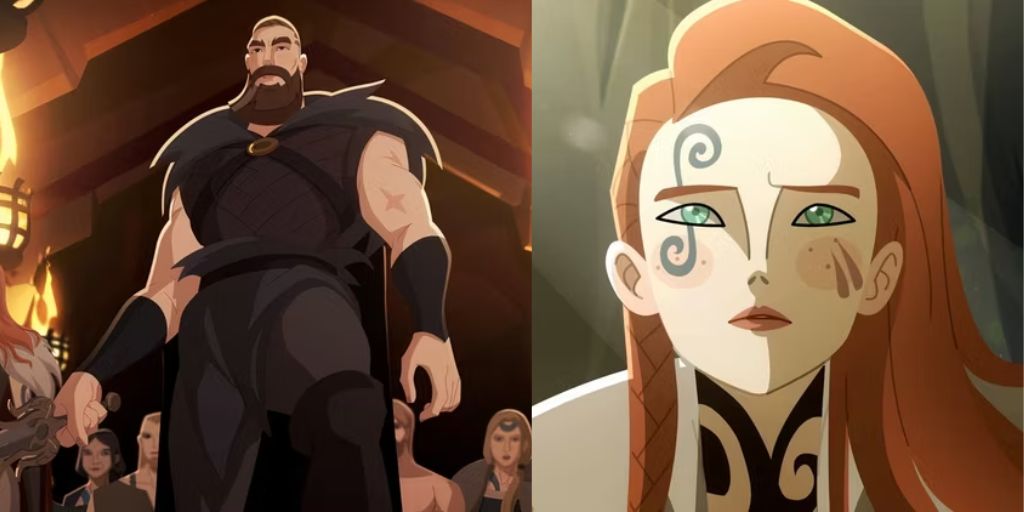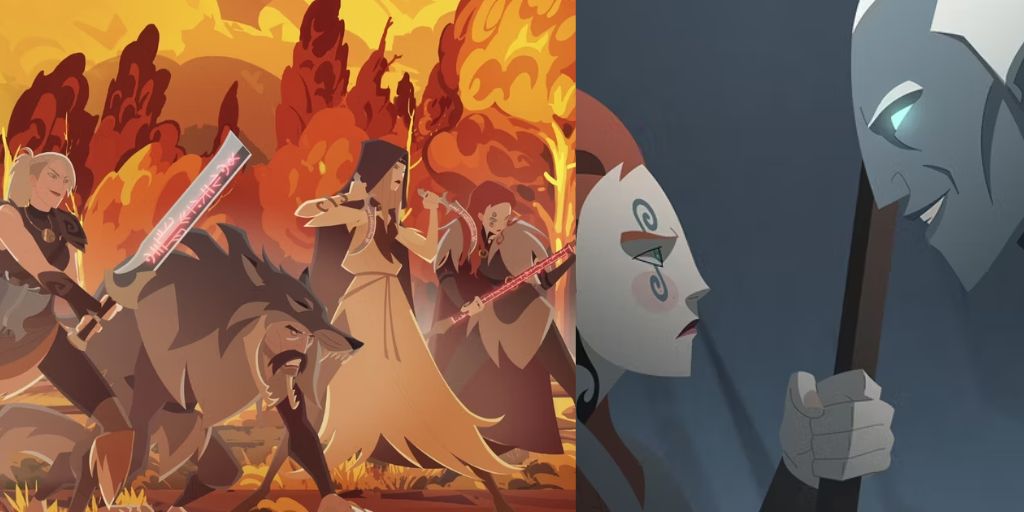Zack Snyder is known for his distinctive style in filmmaking, often blending intense action with rich storytelling. His latest project, Twilight of the Gods, marks a shift in medium as he moves into animation.
This new eight-episode series is available on Netflix and promises to deliver the signature bloody battles and intriguing relationships Snyder is famous for.
Set in a world inspired by Norse mythology, the series offers a fresh take on familiar tales, combining well-known mythological elements with Snyder’s unique storytelling approach.
A Visual Feast
Twilight of the Gods boasts stunning visuals that set it apart from many animated series. The animation comes from Xilam Animation, a studio previously recognized for its work on the R-rated film I Lost My Body.
The series utilizes 2D animation, which provides a nostalgic touch, reminiscent of earlier animation styles. This choice contributes to the show’s aesthetic, making it feel both classic and modern.
Unlike Snyder’s previous works, which sometimes suffered from dull color palettes, Twilight of the Gods is vibrant and alive.
The bright colors draw viewers into its world, even during the darker moments of the story. This visual richness complements the intense narratives and emotional depth of the characters, enhancing the full viewing experience.
The Story of Sigrid
At the heart of Twilight of the Gods is the story of Sigrid, voiced by Sylvia Hoeks. Her journey begins with tragedy as Thor, the God of Thunder, brutally murders her family on the night she is supposed to marry King Leif, portrayed by Stuart Martin. Fueled by rage and a desire for revenge, Sigrid sets out to confront Thor and reclaim her life.
What makes Sigrid’s story compelling is the inversion of traditional gender roles often seen in mythological tales. Norse mythology is heavily male-centric, reflecting the patriarchal society of its time. However, Snyder flips this narrative by making Sigrid the central character.

Her quest for vengeance not only highlights her strength but also redefines the narrative of female characters in mythology, allowing her to take on a hero’s role typically reserved for men.
Leif’s unwavering support for Sigrid is also noteworthy. Instead of being the typical hero who rescues the damsel in distress, Leif vows to follow Sigrid on her quest, demonstrating a deep sense of loyalty and devotion.
This dynamic subverts expectations and allows for a more nuanced portrayal of relationships, emphasizing partnership rather than ownership.
An Ensemble of Unique Characters
Sigrid’s journey is not solitary; she gathers a diverse group of allies, each with their own motivations and backgrounds. This ragtag crew includes characters like Egill, voiced by Rahul Kohli, and Seid-Kona, a witch played by Jamie Clayton.
Egill, in particular, is a fascinating character inspired by the Viking poet and sorcerer from Egil’s Saga. However, Snyder’s interpretation gives him a more modern and complex persona, transforming him into a tragic, bisexual character.
Loki, the God of Mischief, played by Paterson Joseph, also joins Sigrid’s cause. Loki’s character stands out due to his layered portrayal.
Traditionally, he is known for his trickster nature, but in Twilight of the Gods, he shares a bond with Sigrid, as both have suffered under Thor’s wrath. His motivations are deeply personal, making him a tragic figure whose struggles resonate with viewers.
The interactions between Sigrid, Egill, and Loki provide opportunities for character development and emotional depth.
Each character has a unique backstory that adds richness to the narrative, although the ensemble cast can feel overwhelming at times.
While the characters are visually distinctive, the short length of the episodes sometimes hinders full view of their pasts. This leaves viewers wanting more time to connect with each character’s journey.
Themes of Violence and Intimacy
Snyder’s storytelling is known for its boldness, particularly when it comes to adult themes. In Twilight of the Gods, he does not shy away from depicting violence and intimacy.
Early on, he hinted at “lots of sex,” and while the scenes may raise eyebrows, they serve a purpose. The intimate moments reveal characters’ vulnerabilities, motivations, and relationships.

The portrayal of violence is equally significant. The blood and gore in Twilight of the Gods are reminiscent of the animated series Castlevania, with a level of intensity that keeps viewers engaged.
Snyder successfully captures the brutality of the Norse world while intertwining it with character-driven narratives. This balance enhances the stakes of Sigrid’s quest, making her journey feel more impactful.
A New Take on Norse Mythology
For those familiar with the Marvel Cinematic Universe’s version of Thor, Snyder’s interpretation may come as a shock. In Twilight of the Gods, Thor is not the heroic figure fans might expect.
Instead, he is portrayed as a more ambivalent character, displaying malice toward giants and a ruthless demeanor. This depiction aligns with traditional Norse myths, which often highlight the darker aspects of their gods.
Snyder takes creative liberties while still respecting the core themes of Norse mythology. One fascinating aspect he shows is the concept of Valhalla.
Instead of depicting it as a peaceful resting place for fallen warriors, the series presents it as a place where they are conscripted by a vengeful god. This twist challenges traditional beliefs and adds layers to the story, prompting viewers to reconsider what they know about these myths.
Music That Enhances the Experience
The musical score of Twilight of the Gods is another standout element. Composed by Hans Zimmer, who is known for his iconic soundtracks in films like Gladiator and Dune, the music adds depth to the visual storytelling. Zimmer’s score complements the animation and heightens the emotional impact of key moments.
However, one unexpected music choice featuring MC Hammer feels out of place within the context of the series. While it may make sense for the scene, it disrupts the atmosphere created by Zimmer’s work. Such contrasts can draw viewers out of the story, highlighting the importance of carefully curating soundtracks that align with the full tone of a series.
Critiques and Areas for Improvement
While Twilight of the Gods is largely enjoyable, it does have its shortcomings. The crowded cast of characters sometimes feels overwhelming, leaving many underdeveloped.
For example, some characters in Sigrid’s crew lack sufficient backstory and character arcs, making it challenging for viewers to form connections with them. This issue is especially apparent when considering the ensemble nature of the series, as many characters compete for screen time.

Another area for improvement is the pacing. With only eight episodes, the series sometimes rushes through key moments, preventing a deeper history of character relationships and plot points.
A longer season could provide opportunities for more thorough storytelling and character development, allowing viewers to become fully invested in the narrative.
Conclusion
Twilight of the Gods is an attractive addition to Zack Snyder’s body of work. With its stunning visuals, complex characters, and engaging storytelling, the series offers a fresh take on Norse mythology.
Sigrid’s journey of revenge and self-discovery stands out as a powerful narrative, especially in its view of gender roles and character dynamics.
Snyder’s willingness to tackle adult themes and challenge traditional portrayals of gods adds depth to the series. The animation style allows for a creative view of familiar myths, making it accessible to a wide audience.
While the series has its flaws, such as an overcrowded cast and pacing issues, it remains an impressive effort that showcases Snyder’s unique vision.
Twilight of the Gods is now streaming on Netflix, inviting viewers to immerse themselves in a world of epic battles, intricate relationships, and a new perspective on ancient myths.
Whether you’re a fan of Snyder’s previous work or simply looking for a compelling animated series, this show is sure to deliver a memorable experience.




